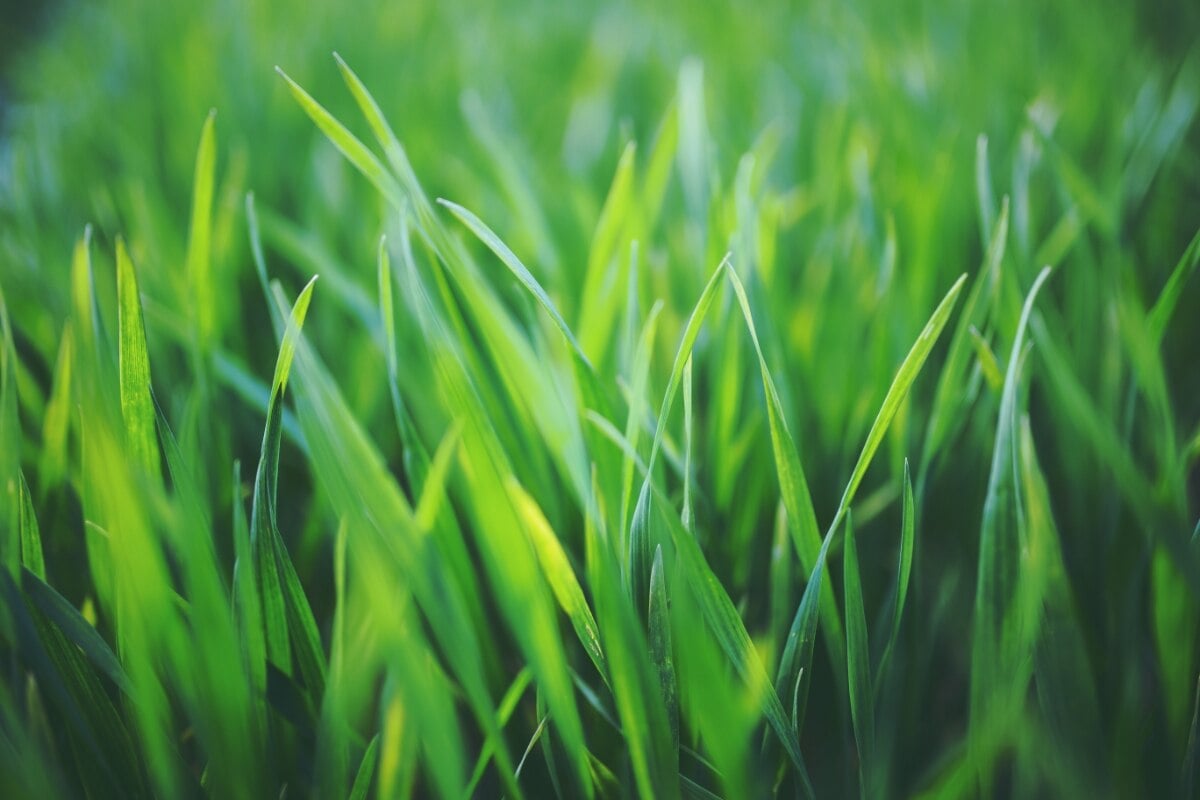
While you may not think of your lawn as an organism, the answer is actually a resounding yes, grass is a living thing! It grows and reproduces, and it can die, just like anything else that’s alive. Keep this in mind when you’re taking care of your grass, and do your best to help it thrive and live its best life.
From its roots to its blades, your grass is a living organism with many amazing attributes. Learn more about how it functions so you can take the best care of it!
Why Grass is a Living Thing
Just like other living things, grass eats and breathes. To stay alive, it needs sunlight to photosynthesize and make its own energy, water, and vital nutrients from the soil. Its roots also need access to oxygen, just like you and I (this is where lawn aeration comes in handy).
Chlorophyll
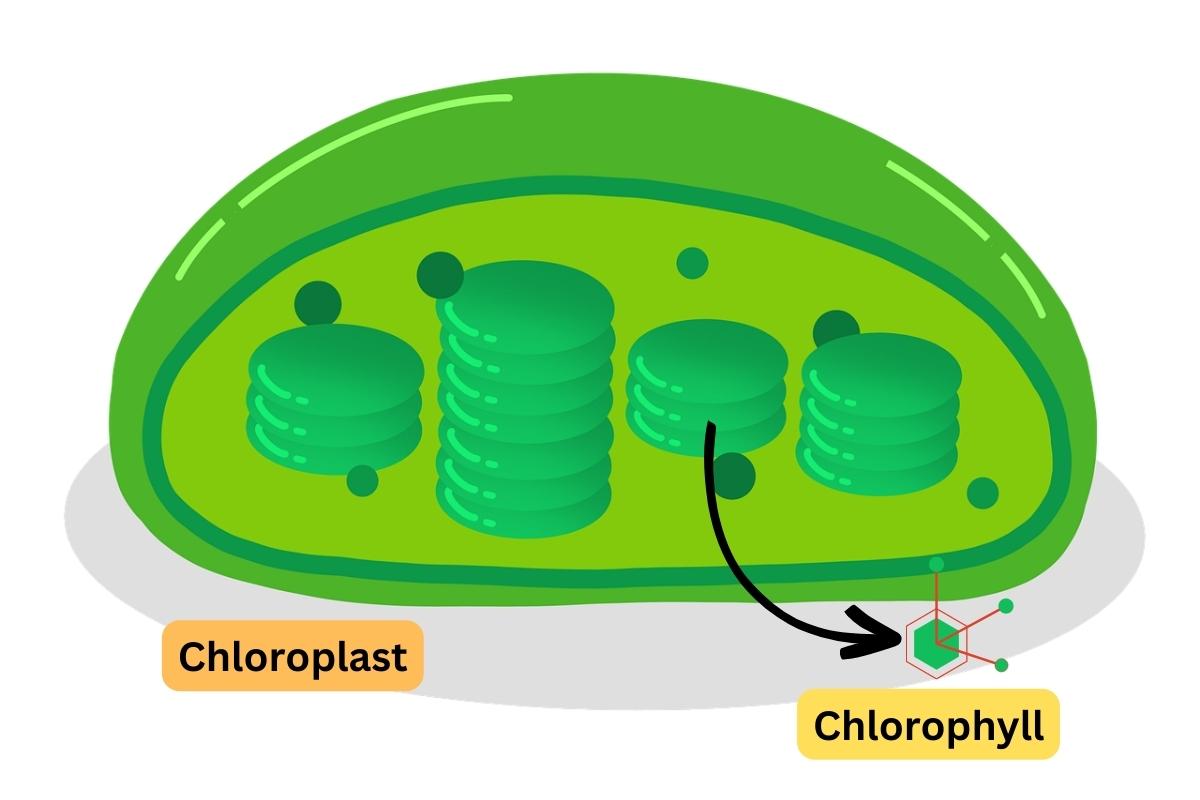
Every blade of grass is full of chlorophyll cells, which give the grass its distinctive green hue and help with photosynthesis. Nutrients consumed by the plant are turned into sugars as a source of energy for the grass to grow – grass eats sunlight for breakfast, lunch, and dinner.
Self-Sustaining
What type of organism is grass? Grass is a self-sustaining primary producer, making up as much as 26% of all plant life on Earth. And while it looks like one big living thing, a lawn is actually made up of thousands of small parts. This is why a patch of grass can turn yellow, yet the rest of the lawn still survives. Each blade of grass is its own living organism.
What’s the takeaway? You have to take care of your whole lawn if you want it to thrive! Each blade of grass needs TLC, including plenty of water, sunlight, and nutrients from fertilizer. This is why it’s so important to spread fertilizer on your lawn evenly and not miss any spots.
Note: Grass is a major food source for herbivores like cows, deer, and goats.
Grass Characteristics
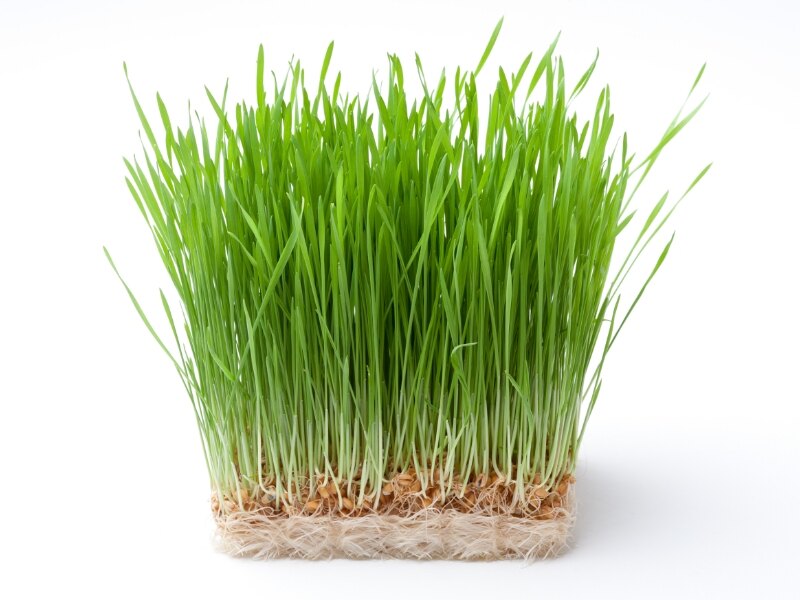
Grass is a member of the scientific family Poaceae, which is a part of the plant kingdom, Plantae. It has many different parts that work together to help it grow and thrive.
Grass consists of a stalk or blade, which is actually a leaf (with millions of chlorophyll cells), a culm (or the stem) which holds up the blades, a root system (which is often thread-like in order to collect water and nutrients from the soil), and sheaths connecting it all together.
Feeding
Like animals and other plants, grass must eat to survive. To get the sustenance it needs through photosynthesis, grass needs the ingredients sunlight, water, and carbon dioxide.
Grass absorbs water from the soil through its roots, sunlight through the chlorophyll in its cells, and carbon dioxide gas from the atmosphere through tiny pores in its leaves. Through photosynthesis, grass turns these ingredients into energy, which it uses to sustain itself and grow.
Fun fact: As a byproduct of photosynthesis, grass releases oxygen into the atmosphere, which humans and other animals use to breathe. We’re all part of one big circle of life!
Reproduction
For a living organism to continue its life cycle, it must reproduce. Grass reproduces through sexual and asexual methods.
Through flowers (or florets) and self-pollination or cross-pollination, it can reproduce sexually. It can also reproduce asexually through vegetative propagation when new culms (aka stems) sprout – almost like an independent clone – and by spreading rhizomes or stolons.
Respiration
Though different from humans, grass also breathes. It absorbs CO2 and releases oxygen as part of the respiration process. Grass is able to do this through its leaves, stems, and roots since they each have pores (stomata) for gas exchange.
Adaptation
A huge part of the survival process involves adapting to different environmental changes, and grass has that ability, too. It can spread out its leaves for more sunlight when it’s cold or roll them up to minimize transpiration when it’s too hot out.
The plant will grow longer roots if it needs better access to water or find moisture elsewhere if the soil is lacking – like near ponds or leaking pipes. So, grass is not only alive, but it has a survival instinct.
Growth Requirements
Much like humans, grass needs specific conditions to grow. It requires air, water, sunlight, and warmth, as well as nutrients from the soil. If any of these are lacking (or present in excess) it could hamper growth or even lead to the grass’s death.
Types of Grass
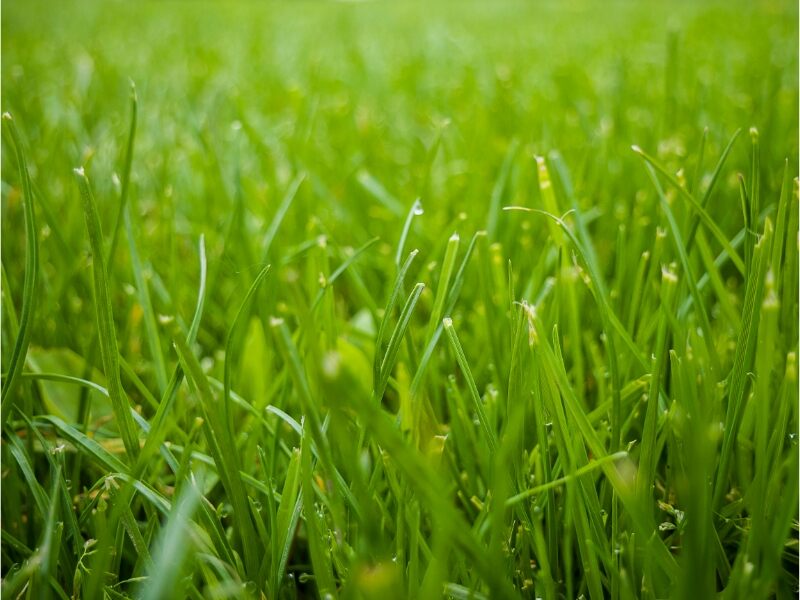
Grass comes in all shapes and sizes, from the lawns of suburban homes in the U.S. to wild range land as far away as Africa or Siberia. There are more than 11,000 species of grass within the Poaceae family! The kinds we like to plant in our landscapes can be divided into three categories: warm-season turfgrasses, cool-season turfgrasses, and ornamental grasses.
Turfgrasses are generally used for providing a manicured, green lawn, while ornamental grasses add interesting texture to landscaping and gardens. Let’s take a look at the different types of grass.
Cool-Season Turfgrasses
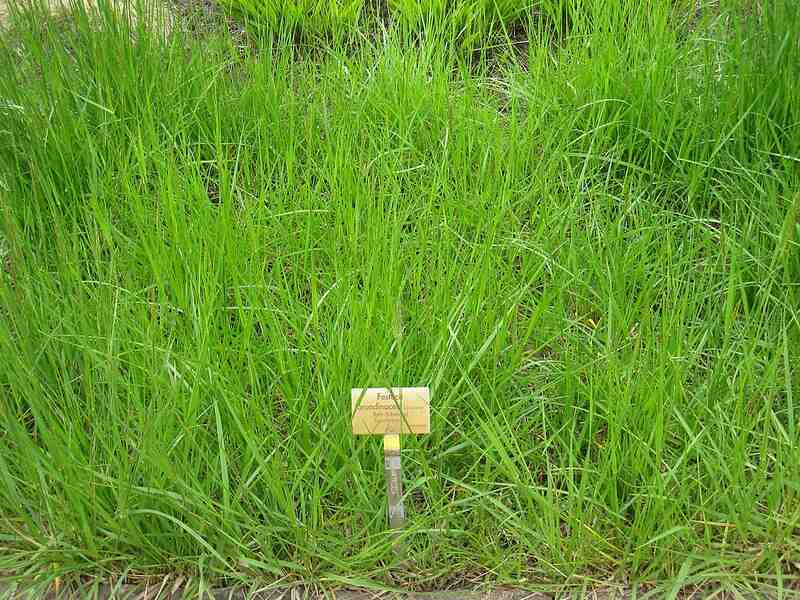
These cooler-climate grasses grow in regions with more dramatic temperature changes and cold winters. Cool-season grasses have their active growth periods in spring and fall, and they slow growth or go dormant in summer and winter.
Popular cool-season grasses used in lawns include:
- Fine fescue: This is a low-maintenance turfgrass that’s tolerant of drought, shade, and steep slopes. It has fine, dark green leaves that are slender with a vertical growth habit.
- Tall fescue: This is an incredibly durable grass type, making it great for areas with heavy foot traffic, and it requires minimal watering when in season.
- Kentucky bluegrass: KBG has deep green leaves that are almost blue and form a dense turf. It thrives in full sun but can tolerate partial shade as long as it’s mixed with fescue grass.
- Perennial ryegrass: This is a great choice for overseeding patchy lawns, as it germinates quickly and forms a bright, lush lawn. Just note that it has poor drought and shade tolerance.
Warm-Season Turfgrasses
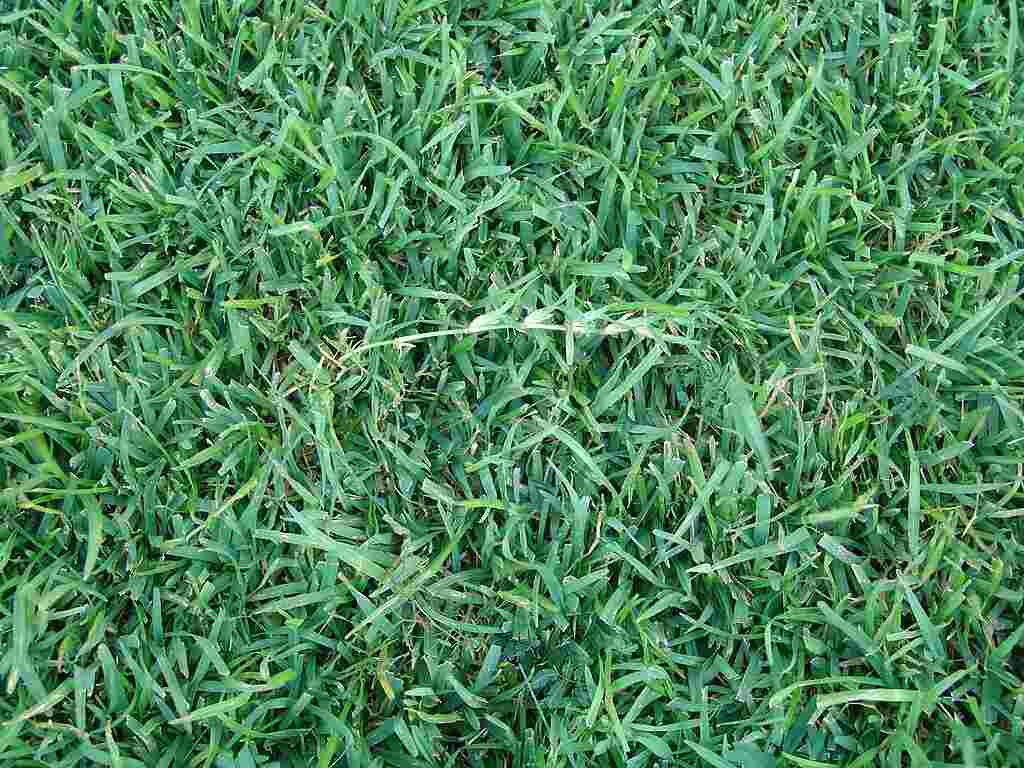
These warm-season grasses grow in areas with warmer weather all year round. They grow most actively in late spring and summer, then slow down in fall, and finally go dormant in winter
Common species of warm-season grass used for lawns include:
- Bermudagrass: With its bright green color and fast growth rate, this grass requires frequent mowing and fertilizing. Bermudagrass is especially heat-resistant and tolerant of drought, making it a great choice for hot climates.
- Centipedegrass: Centipedegrass is tolerant of acidic soils and can be found in the deep south. It needs a moist environment to survive, is slower-growing than most warm-season grasses, and does not like to be mowed too often.
- St. Augustinegrass: Originating in Florida, St. Augustinegrass is a high-maintenance grass type with a slow growth rate. It needs lots of water and full sunlight or partial shade and does not do well in cold temperatures.
- Zoysiagrass: Zoysiagrass is low maintenance, requiring limited fertilization and minimal mowing. It’s one of the most shade-tolerant warm-season grasses.
- Bahiagrass: This grass variety does best in sandy soils and thrives in hot, humid climates. It requires frequent mowing but is otherwise relatively low-maintenance.
- Buffalograss: Buffalograss is drought-tolerant and can survive in harsher conditions but has a slow growth rate. This makes it great for gardens that don’t need regular mowing but likely won’t make the most photo-friendly lawn.
Note: Often, different types of grass seed are mixed together to achieve optimal growth for lawns, depending on the area, climate, and soil requirements.
Ornamental Grasses
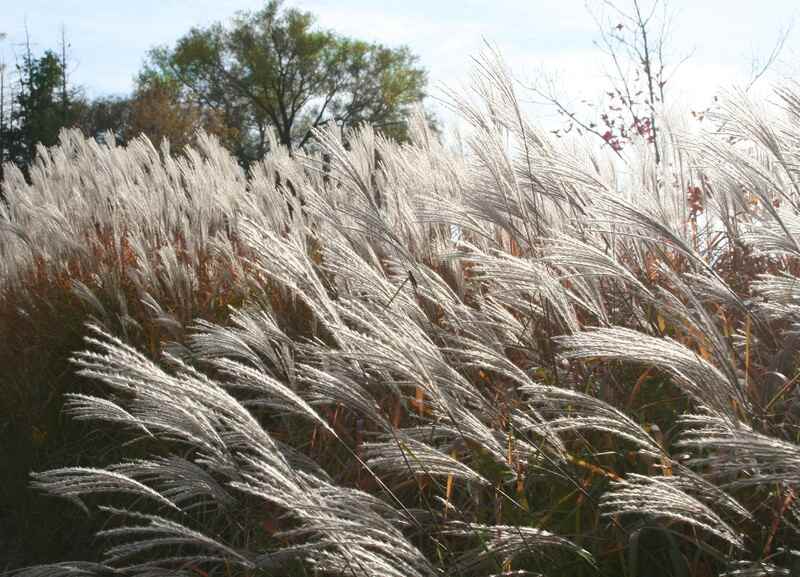
Homeowners and gardeners mainly use ornamental grasses for landscaping and to add texture, design, and variety to gardens, pathways, and borders.
- Small ornamental grasses grow about 1-3 feet tall. Examples include Indiangrass, liriope, and fountaingrass.
- Mid-range ornamental grasses grow about 4-5 feet tall. These include ‘Standing Ovation’ little bluestem and redhead fountaingrass.
- Large ornamental grasses grow as tall as 6-10 feet. Examples include pink feather pampas grass and gold breeze miscanthus.
How to Tell if Your Grass is Alive and Healthy

Now that you know the basics behind grass and its living components, it’s time to make sure your lawn is as healthy and vibrant as possible. Here are a few ways to tell if your grass is alive and thriving:
- The Tug Test – Take a small clump of grass in your hand, and gently tug on the blades. If it comes up easily enough, this section of grass is dead. If there’s some resistance, the grass is still alive.
- Examine Color – If your lawn has brown patches or spots, it could be a sign of disease or drought. To check, get down in the grass and examine the color of each blade individually. If they’re discolored or wilted, it’s likely in distress; if the blades are healthy and green, it’s a good sign.
- Check Roots – Take a look at the roots to make sure they’re not exposed or dry. The roots should be strong, pliable, and damp – all signs of a living lawn. They should not be visible above the soil.
- Proper Lawn Care Maintenance – Perhaps the most reliable way to tell if your grass is alive and healthy is by giving it all the necessary TLC. Proper lawn care maintenance, including mowing, fertilization, irrigation, aeration, weed control, and pest control, will ensure it stays healthy for years to come.
Keep in mind that grass can turn brown in its dormant season to conserve energy, and it often looks dead. Learn how to tell the difference between dead and dormant grass so you always know whether your grass is still alive or not.
5 Surprising Grass Facts
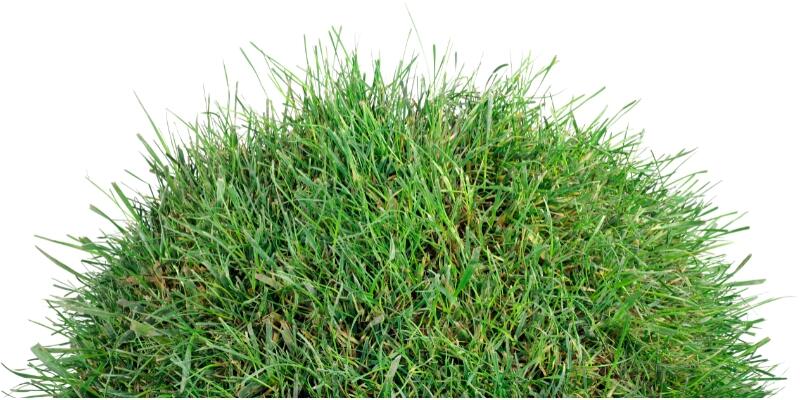
The ecosystem grasses provide is paramount to the health of every other living organism on Earth. Here are some fun facts about grass that may surprise you!
1. The Oldest Living Organism Ever is Grass
Neptune’s grass, an underwater seagrass meadow in Spain’s Balearic Islands, is believed to be the oldest living organism on Earth. According to geneticists, it dates back more than 200,000 years!
2. Grass Helps Clean the Air
Like trees, grass can absorb certain pollutants and dust particles from the air to help clean it. Due to its ability to trap small sub-micron particles, it can do an even better job than larger plants like trees and bushes.
3. Grass Slows Global Warming
The environmental benefits of grass don’t stop there. Grasses can help slow the effects of global warming, too. Turfgrasses, for example, absorb 14.7-33.3 million metric tons of carbon per year – that’s the same as taking 5.2 million cars off the roads!
4. Grass Helps Keep Soil Intact
The roots of grass blades help keep the soil in place and prevent erosion – which is a major component of floods. In fact, during the Great Depression, some areas saw over 100 million acres of land decimated due to soil erosion.
5. Grass is the Most Planted Crop in the U.S.
In the U.S., Americans dedicate more land to lawns than any food crop. According to NASA and NOAA figures, lawn grass covers 45 million acres of land in the U.S. – so it’s no wonder why it’s known as the most planted crop!
FAQ
How Long Does Grass Live?
The lifespan of grass can vary depending on the type and the care it receives, but if cared for properly, your grass can live up to 7-10 years.
Does Grass Always Grow Back?
Dormant grass that is healthy will spring back to green when its growing season rolls around. However, reviving old, dead grass is not possible. If you notice brown or bare areas in your lawn, you can lay new seed or sod to grow it back from scratch.
Why Does Grass Release a Smell When Cut?
When grass is cut, it releases that classic fresh-cut grass smell due to compounds called green leaf volatiles. These organic compounds act as an aromatic distress signal to other surrounding vegetation.
Why Do Dogs Eat Grass?
Dogs often eat grass as a way to improve their digestion and add extra nutrients to their diet. Grass is also a source of roughage, which helps them pass stool. Eating grass won’t hurt your pet, but if it becomes excessive, it could indicate an underlying health issue, and you should consult your veterinarian.
Grass: A Living Wonder
Where can we turn to find solace among the hustle and bustle of modern life? For millions around the world, it’s in their own backyards as they admire a beautiful lawn of green, living grass.
As widely used and commonplace as it is, we often don’t realize how truly special grass is – from lush green blades to an interconnected root system, this network of thousands of living organisms proves itself time and again as a resilient and hardworking marvel of nature.
But don’t let grass’s low-key status fool you – this powerhouse of a plant still needs proper TLC to stay up and running, as do other living organisms. LawnStarter can help you connect with a local lawn care pro to provide the careful maintenance your grass needs to thrive.
Main Photo Credit: kaboompics from Pixabay / Canva Pro / License